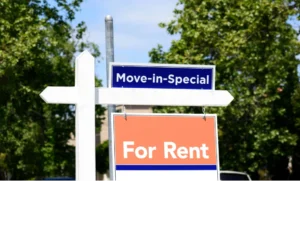How to build wealth with a 1031 exchange

Maximizing 1031 Exchange Benefits for Multifamily Investments
Maximize your multifamily investments with 1031 exchanges. Strategically leverage tax deferral benefits and reinvest in like-kind properties. Understand exchange rules and seek qualified intermediaries for compliance. Identify suitable properties within the 45-day timeframe to enhance cash flow.
Diversify with duplexes, triplexes, or apartments for steady rental income and appreciation. Optimize ROI through strategic reinvestment for long-term wealth growth. Learn from real-life case studies to see the tax advantages firsthand. Enhance risk management by diversifying your portfolio. Start maximizing your 1031 exchange benefits for multifamily investments today.
Key Takeaways
- Leverage 1031 exchanges for tax deferral on multifamily investments.
- Identify like-kind properties within the 45-day timeframe.
- Reinvest wisely to enhance cash flow and ROI.
- Diversify portfolio with multifamily properties for risk management.
- Realize long-term wealth accumulation through strategic 1031 exchanges.
Understanding 1031 Exchange Rules
To maximize the benefits of 1031 Exchange for multifamily investments, a solid grasp of the intricate rules governing this tax-deferral strategy is essential. The core principle of a 1031 exchange is the deferral of capital gains tax when selling investment properties and reinvesting the proceeds into like-kind properties.
Specifically, when it comes to multifamily investments, such as apartment buildings or duplexes, meeting the criteria for like-kind properties is important. Remember, the IRS focuses on the nature and use of the properties involved, not their quality or condition.
Comprehending the investment timelines is paramount for a successful 1031 exchange with multifamily properties. You must adhere to strict deadlines for identifying potential replacement properties and then consummating the acquisition. Any deviation from these timelines could jeopardize the tax-deferred status of your exchange.
Additionally, enlisting the services of a Qualified Intermediary is not just advisable but necessary. These professionals play a pivotal role in overseeing the 1031 exchange process, ensuring all transactions are in compliance with IRS regulations.
In essence, by understanding and adhering to the rules governing 1031 exchanges, particularly in the domain of multifamily investments, you can navigate this tax-deferral strategy effectively and capitalize on its benefits while staying in compliance with IRS guidelines.
Identifying Like-Kind Properties
Identifying like-kind properties for a 1031 exchange in multifamily investments involves determining various types of residential rental properties that align with the investment or business purpose criteria. When selecting like-kind properties, consider a range of options such as duplexes, triplexes, apartment buildings, and even vacation rentals.
The important factor is that both the relinquished and replacement properties are held for investment or business purposes. Remember that the properties must be of similar nature or character, not necessarily identical in size or structure.
To guarantee a successful 1031 exchange and maximize tax deferral benefits, it is vital to identify suitable like-kind properties within the 45-day timeframe. This timeframe starts from the day you transfer the first property in the exchange. Take advantage of this period to assess potential properties that meet the like-kind property requirements and align with your real estate portfolio goals.
Time Constraints and Deadlines
Considering the strict time constraints and deadlines associated with 1031 exchanges, timely planning and execution become paramount for a successful transaction. The 45-day identification period for replacement properties and the subsequent 180-day deadline to complete the purchase of the replacement property are vital components of a 1031 exchange.
Failure to meet these strict deadlines can result in disqualification from tax deferral benefits.
Extensions are not typically granted for the 45-day or 180-day timelines, making adherence to these deadlines essential. The success of your 1031 exchange hinges on meeting these time constraints with precision.
To optimize the benefits of a 1031 exchange and avoid potential tax consequences, it is imperative to prioritize and meticulously manage these deadlines throughout the exchange process.
Tax Deferral Strategies
Implementing effective tax deferral strategies for multifamily investments involves meticulous planning and adherence to IRS guidelines to maximize benefits. By utilizing 1031 exchanges, investors can defer capital gains taxes on multifamily property sales, enabling the reinvestment of sale proceeds back into new properties.
This tax deferral approach not only defers taxes but also allows for increased cash flow and portfolio growth in multifamily investments.
Following IRS guidelines is essential for investors looking to make the most of tax deferral strategies with multifamily properties. Diversifying multifamily holdings through 1031 exchanges offers long-term tax advantages and the potential for wealth accumulation over time.
It’s important to take into account the strategic implications of such tax deferral strategies and seek professional assistance to ensure compliance with regulations while maximizing benefits.
Leveraging Qualified Intermediaries
Utilizing Qualified Intermediaries is an essential step in maximizing the benefits of 1031 exchanges for multifamily investments. These intermediaries play a vital role in facilitating tax-deferred exchanges by overseeing property transfers and guaranteeing compliance with IRS regulations.
By entrusting a Qualified Intermediary with the exchange process, investors can benefit from their expertise in identifying replacement properties within the stringent 45-day deadline.
One key advantage of working with Qualified Intermediaries is the safeguarding of funds involved in the exchange. By preventing direct receipt of sale proceeds by the investor, they help preserve the integrity of the exchange and minimize the risk of disqualification due to non-compliance.
Additionally, their familiarity with the intricacies of 1031 exchanges streamlines the process, reducing the potential for errors and maximizing the tax benefits associated with investment properties.
In dealing with the complexities of exchange deadlines and funds safeguarding, partnering with a Qualified Intermediary ensures a smoother and more efficient 1031 exchange experience. Their role is fundamental in not only meeting IRS requirements but also in optimizing the financial advantages that come with deferring taxes through property exchanges.
Maximizing Cash Flow Benefits
To optimize cash flow benefits in 1031 exchanges for multifamily investments, strategically reinvesting in properties to enhance rental income is paramount. Multifamily properties present a lucrative opportunity for generating steady income through rental units.
By reinvesting in these properties, you can not only secure a reliable cash flow but also potentially increase rental income by upgrading and improving the units.
Utilizing 1031 exchanges for multifamily investments allows you to leverage the benefits of enhanced cash-on-cash returns and long-term wealth accumulation. Diversifying your investment portfolio with multifamily properties can further maximize cash flow opportunities and contribute to overall portfolio growth.
The key to maximizing cash flow benefits lies in the strategic reinvestment of funds into multifamily properties. By focusing on enhancing rental income and ensuring a steady flow of cash, you can create a robust financial foundation for long-term wealth creation.
Remember, the goal is to optimize cash flow through prudent reinvesting strategies that enhance the performance of your rental properties and ultimately boost your portfolio’s overall profitability.
Avoiding Common Pitfalls
Why is it essential to meticulously adhere to the strict timelines and guidelines in 1031 exchanges to steer clear of potential pitfalls? Timing plays a vital role in the success of your 1031 exchange. The 45-day identification period and 180-day closing window are not mere suggestions; they are essential deadlines that, if missed, can result in significant tax implications.
Failure to identify suitable replacement properties within the specified timeline can spell disaster for your exchange, potentially leading to unexpected tax liabilities and loss of the exchange benefits.
Moreover, understanding the IRS rules surrounding like-kind property exchanges requires careful planning and preparation. Ignoring the like-kind requirement or attempting to exchange non-qualifying properties can have severe consequences, including disqualification of the exchange and triggering capital gains taxes.
It is crucial to seek professional guidance from a Qualified Intermediary to ensure compliance with the intricate rules governing 1031 exchanges for investment properties like multifamily units or rental properties.
Real-Life Case Studies
Exploring through real-life case studies of successful 1031 exchanges involving multifamily properties provides concrete examples of how investors strategically maximize benefits through reinvestment. These case studies serve as practical illustrations of the tax advantages, deferral of capital gains, and overall wealth creation potential inherent in real estate investing.
By strategically reinvesting the proceeds from the sale of one multifamily property into another of equal or greater value, investors can not only defer capital gains taxes but also enhance their rental income, promote portfolio growth, and fund property upgrades.
In these success stories, investors have leveraged the 1031 exchange mechanism to tap into significant value from their multifamily investments. By carefully selecting replacement properties that align with their investment goals, these individuals have seen their wealth grow steadily over time.
The ability to defer capital gains taxes allows investors to keep more of their profits working for them, accelerating the process of portfolio expansion and wealth accumulation. Additionally, reinvesting in multifamily properties presents opportunities to increase rental income through strategic acquisitions and property upgrades, thereby optimizing cash flow and overall investment returns.
Through these real-life examples, investors can glean valuable insights into the power of strategic reinvestment for maximizing the benefits of multifamily investments.
Diversifying Investment Portfolio
Diversifying your investment portfolio with multifamily properties can enhance risk management and increase potential returns. Multifamily real estate investments offer a unique opportunity to diversify your real estate portfolio while benefiting from steady rental income and potential property appreciation.
By incorporating multifamily properties into your investment portfolio through 1031 exchanges, you can effectively diversify your real estate investments and balance your overall risk exposure.
When looking to diversify your investment portfolio, it’s essential to contemplate tax strategies such as 1031 exchanges to defer capital gains taxes. By reinvesting the proceeds from the sale of a property into like-kind replacement properties, such as multifamily real estate, you can continue to grow your portfolio without immediate tax implications.
This approach not only allows for tax-deferred growth but also enables you to strategically allocate funds across different asset classes.
Furthermore, diversifying your real estate investments with multifamily properties can act as a hedge against market fluctuations. The steady cash flow from rental properties can provide a buffer during economic downturns, reducing the overall volatility of your investment portfolio.
Incorporating multifamily investments alongside other asset types can help create a resilient and balanced portfolio that maximizes long-term returns while mitigating risk.
Enhancing ROI Through 1031 Exchanges
Enhance your return on investment potential by leveraging 1031 exchanges for multifamily properties to maximize growth and cash flow benefits. When it comes to enhancing ROI through 1031 exchanges, multifamily investments offer a unique opportunity for strategic reinvestment and portfolio value growth.
By deferring capital gains taxes through like-kind exchanges, you can tap into the potential for long-term wealth building while enjoying increased rental income and reduced tax liabilities.
One of the key advantages of utilizing 1031 exchanges with multifamily properties is the ability to boost your cash flow potential. With steady rental income streams and appreciation over time, multifamily investments provide a stable foundation for enhancing your ROI.
Additionally, the tax benefits associated with 1031 exchanges allow you to reinvest your profits back into your portfolio, fostering portfolio growth and diversification.
Frequently Asked Questions
What Is the Biggest Advantage of a 1031 Exchange?
The biggest advantage of a 1031 exchange is tax deferral, allowing you to defer capital gains taxes by reinvesting in real estate. This strategy can boost investment growth, wealth accumulation, and portfolio diversification.
With asset protection and market opportunities, a 1031 exchange becomes a key financial strategy for maximizing returns. By leveraging property exchange, you can optimize your real estate investments and build long-term wealth through strategic reinvestment.
Can You Use a 1031 Exchange to Buy Multiple Properties?
Yes, you can use a 1031 exchange to buy multiple properties, offering a powerful investment strategy in real estate. By leveraging the tax benefits of a 1031 exchange, you can strategically expand your portfolio, diversifying your investments and generating passive income.
This approach supports wealth building, deferring capital gains and aiding in financial planning. Utilizing a 1031 exchange for multiple properties is a smart move for savvy investors looking to optimize their real estate holdings.
How Do You Take Advantage of a 1031 Exchange?
To take advantage of a 1031 exchange, timing strategies are essential. Use the 45-day identification period wisely to select replacement properties meeting like-kind criteria. Conduct thorough market research to inform property selection.
Understand the tax implications, aligning with your investment goals. Explore financing options for flexibility. Consider asset diversification and exit strategies. Prioritize due diligence and seek professional guidance for a seamless exchange experience.
How to Build Wealth With 1031 Exchange?
To build wealth with a 1031 exchange, you can utilize tax deferral to reinvest in multifamily properties, fostering investment growth and portfolio expansion. By engaging in property exchanges strategically, you can focus on equity building, capital preservation, and asset diversification. This approach sets the stage for income generation and long-term wealth creation through a savvy real estate strategy.
Conclusion
As you navigate the complexities of 1031 exchanges for multifamily investments, keep in mind that maximizing benefits requires careful planning and execution. By identifying like-kind properties, leveraging qualified intermediaries, and adhering to time constraints, you can enhance your ROI and diversify your investment portfolio effectively.
Stay proactive in tax deferral strategies and avoid common pitfalls to secure success in your real estate endeavors. Your dedication to strategic decision-making will unquestionably lead to fruitful outcomes in the long run.
Source: Multifamily Mentor













 Accessibility
Accessibility